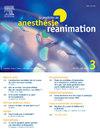Dose test pour la péridurale obstétricale
Q4 Nursing
引用次数: 0
Abstract
Un test d’aspiration négatif sur un cathéter péridural ne suffit pas à garantir son bon positionnement. Il convient donc de définir une stratégie complémentaire permettant d’éviter les conséquences d’une injection intraveineuse ou intrathécale accidentelle d’une quantité critique d’anesthésique local. Historiquement, une « dose test » réalisée avec de la lidocaïne adrénalinée a été proposée pour détecter le positionnement intravasculaire ou intrathécal du cathéter avant l’administration du mélange analgésique. Cependant, cette méthode est associée à un risque excessif de bloc neuraxial étendu, de repose injustifiée de péridurale et de bloc moteur majoré. Elle doit donc être abandonnée au profit d’une stratégie reposant sur l’administration initiale d’une fraction du mélange analgésique composé d’un anesthésique local faiblement concentré et d’un opiacé liposoluble. Cette dose initiale sera suffisante pour générer rapidement un bloc moteur et identifier un cathéter intrathécal sans exposer les patientes au risque de bloc neuraxial étendu. L’évaluation objective du bloc sensitif constitue, quant à elle, la méthode de référence pour exclure un cathéter en position intravasculaire. Cette approche est celle prônée par les dernières RFE SFAR-CARO, labellisées HAS, dédiées aux bonnes pratiques en matière d’analgésie périmédullaire obstétricale.
A negative aspiration test on an epidural catheter provides no guarantee for its correct placement. Therefore, an additional strategy has to be defined to avoid the unwanted consequences of an accidental intrathecal or intravascular injection of a critical amount of local anaesthetic. Historically, a “test dose” with lidocaine plus epinephrine was used to detect the intrathecal or intravascular position of the catheter before administering the analgesic solution. However, this method is associated to an excessive risk of high neuraxial block, unnecessary replacement of the epidural catheter and an increased incidence of motor blockade. This method should be replaced by the initial administration of a fraction of the analgesic solution containing a low concentration local anaesthetic plus a lipophilic opioid. This initial dose should be able to produce rapidly a motor blockade to identify the intrathecal position of the catheter without exposing the patient to the risk of a high neuraxial block. The objective evaluation of the sensory block is the method of choice to rule out an intravascular catheter. This approach is recommended by the recent SFAR-CARO, HAS endorsed, French guidelines dedicated to neuraxial labour analgesia
产科硬膜外试验剂量
硬膜外导管的负吸力测试不足以保证其正确定位。因此,需要制定一项补充策略,以避免意外静脉注射或肠内注射临界量局部麻醉的后果。历史上,有人提议用肾上腺素利多卡因进行“剂量测试”,以检测在使用止痛药混合物之前导管的血管内或腹腔内位置。然而,这种方法与神经轴阻滞延长、硬膜外休息不足和运动阻滞增加的过度风险有关。因此,它应该被放弃,取而代之的是一种基于初始使用部分由低浓度局部麻醉剂和脂溶性阿片类药物组成的镇痛混合物的策略。这一初始剂量将足以快速生成运动阻滞并识别导管,而不会使患者面临广泛的神经轴向阻滞的风险。对敏感阻滞的客观评估是排除血管内导管的参考方法。这种方法是最新的SFAR-CARO RFE所提倡的,HAS标签,致力于产科髓周疼痛的良好实践。硬膜外导管的负吸入试验不能保证其正确放置。因此,必须确定一种额外的策略,以避免意外地在腔内或静脉内注射临界量的局部麻醉的意外后果。历史上,在给药镇痛溶液之前,使用利多卡因加肾上腺素的“测试剂量”来检测导管的肠内或静脉内位置。然而,这种方法与高神经轴阻滞的过度风险、硬膜外导管的不必要更换和运动阻滞的增加有关。这种方法应由最初给药的一小部分含有低浓度局部麻醉剂加亲脂类阿片类药物的镇痛溶液代替。这种初始剂量应该能够快速产生运动阻塞,以确定导管的腔内位置,而不会使患者面临高神经轴阻塞的风险。对感觉阻滞的客观评价是选择排除静脉导管的方法。这种方法被最近的SFAR-CARO推荐,并得到了支持,英语指导方针致力于神经轴向劳动镇痛。
本文章由计算机程序翻译,如有差异,请以英文原文为准。
求助全文
约1分钟内获得全文
求助全文
来源期刊

Praticien en Anesthesie Reanimation
Medicine-Anesthesiology and Pain Medicine
CiteScore
0.10
自引率
0.00%
发文量
61
审稿时长
51 days
期刊介绍:
Conçu et élaboré pour la formation médicale continue des anesthésistes réanimateurs, Le Praticien en anesthésie réanimation répond à des objectifs clairement définis. - Être au plus près de votre quotidien : la revue vous apporte des réponses immédiatement opérationnelles aux problèmes rencontrés dans votre exercice.
 求助内容:
求助内容: 应助结果提醒方式:
应助结果提醒方式:


